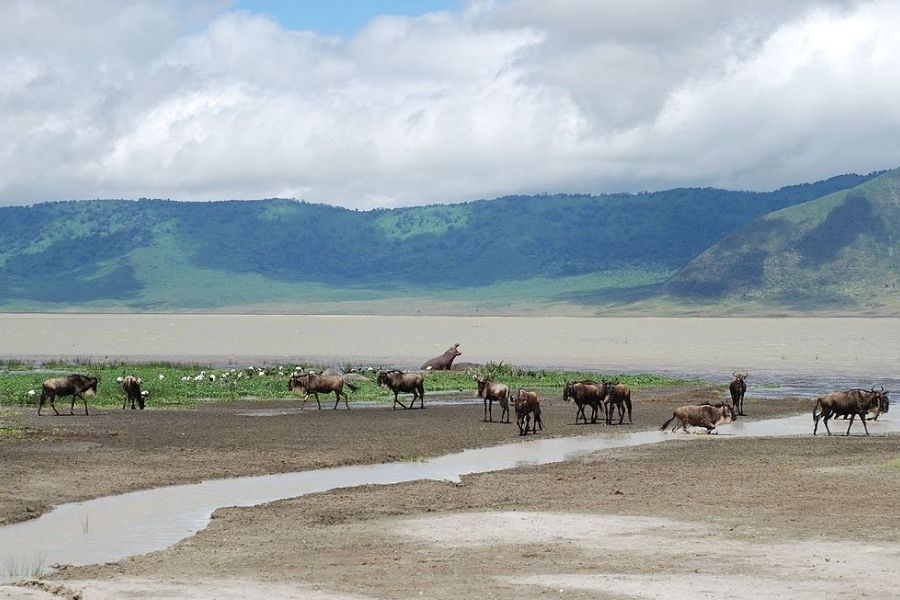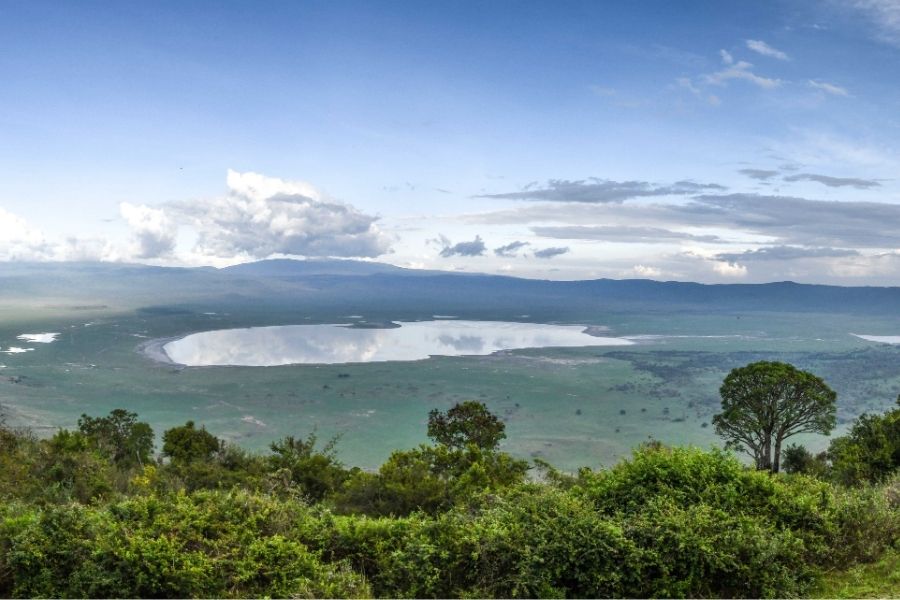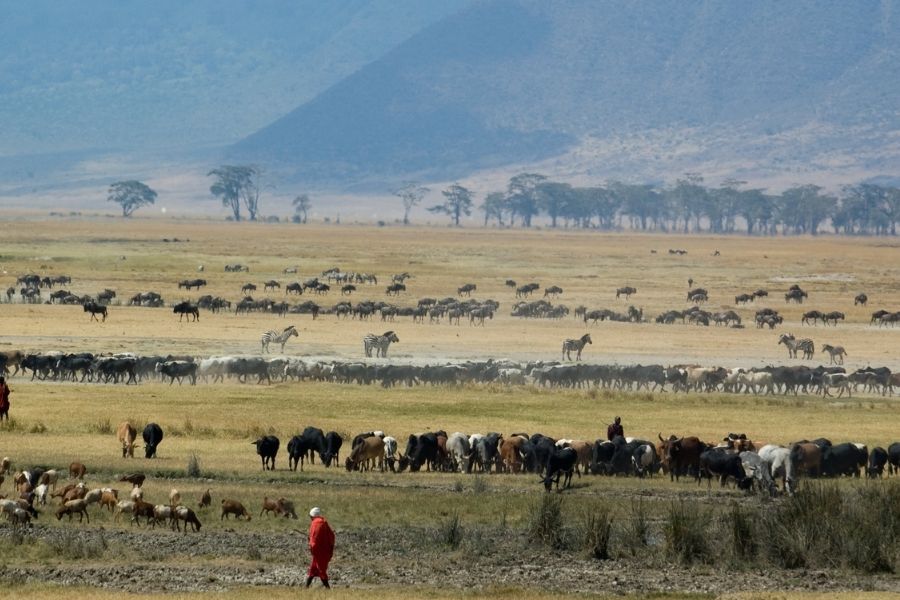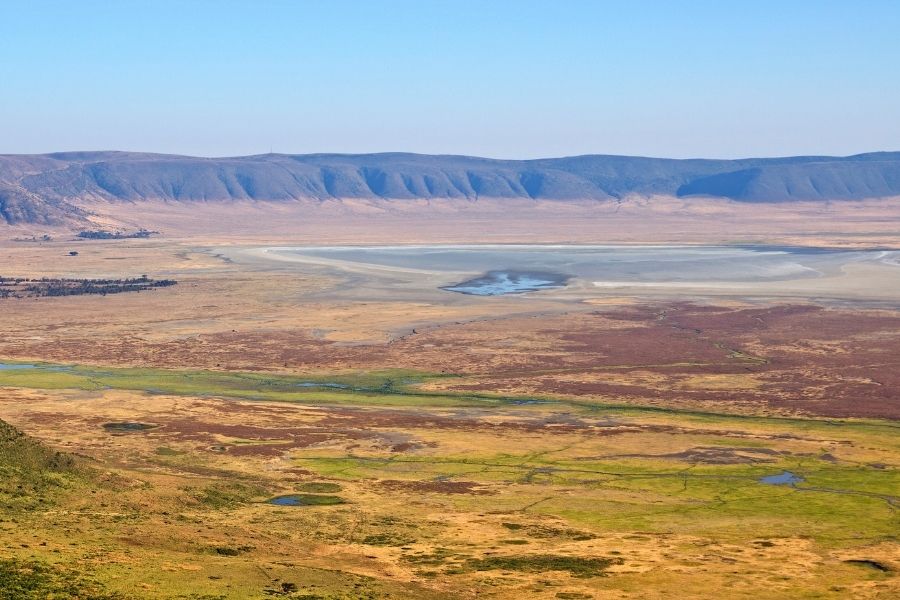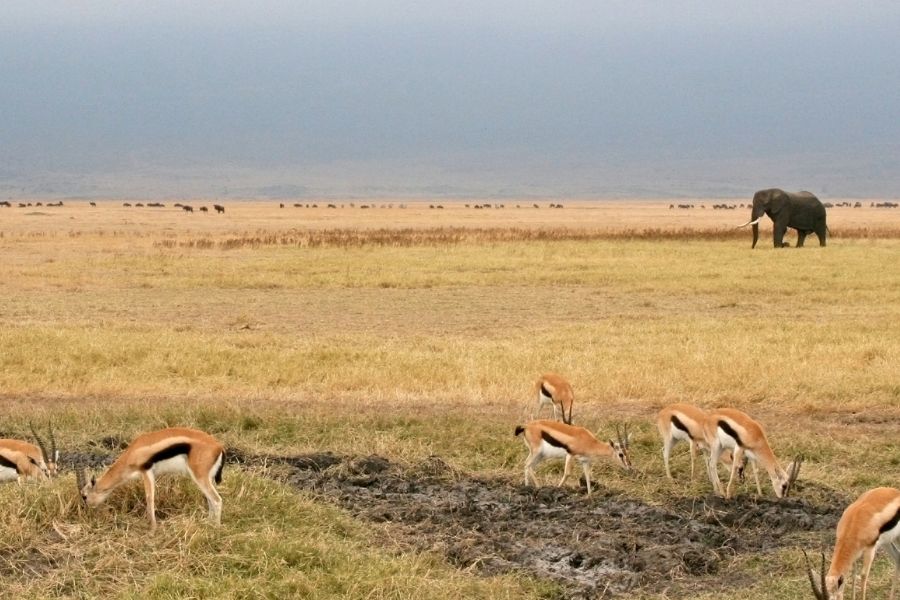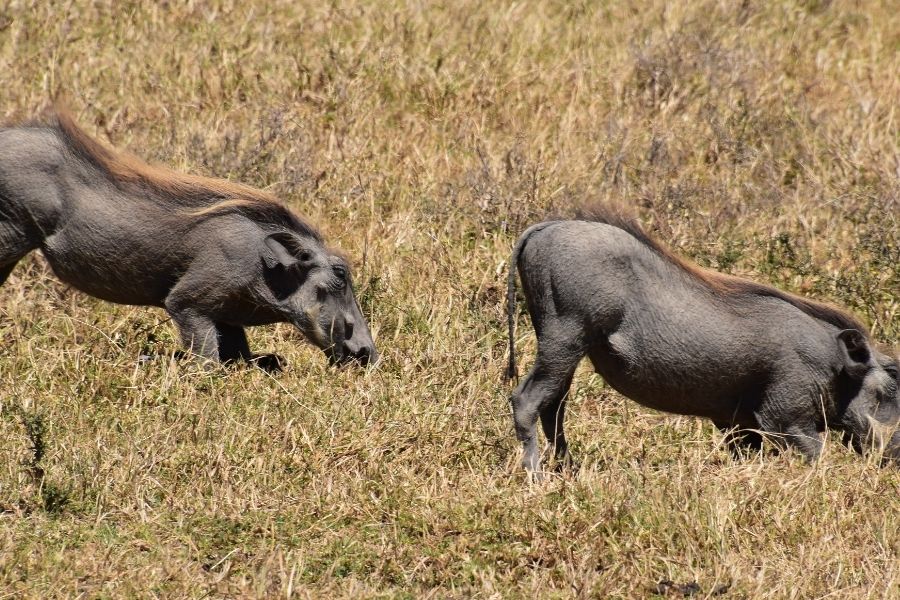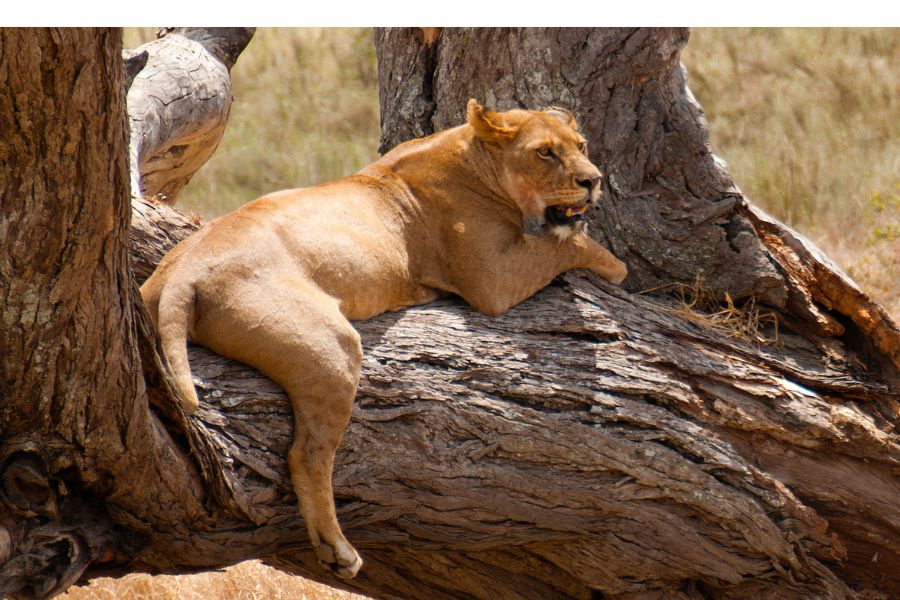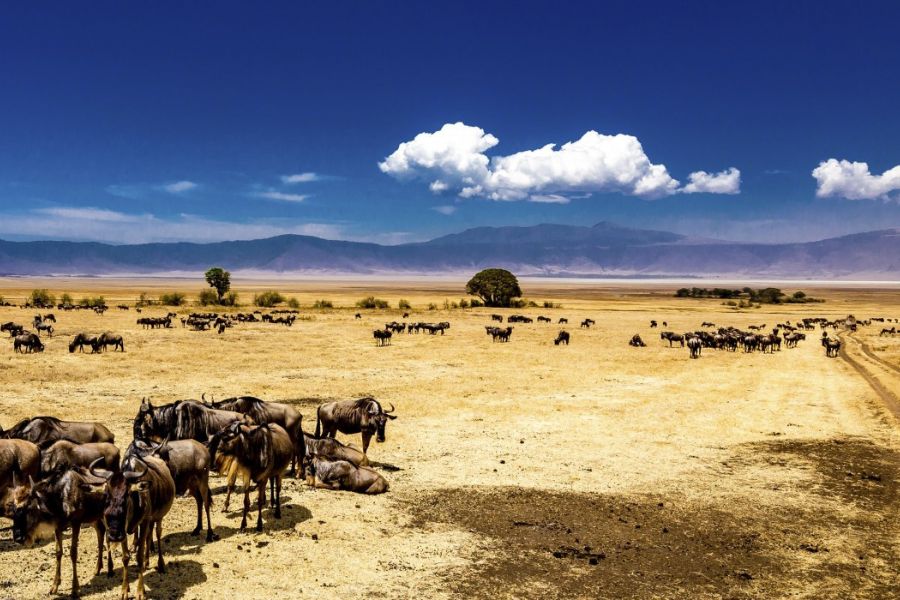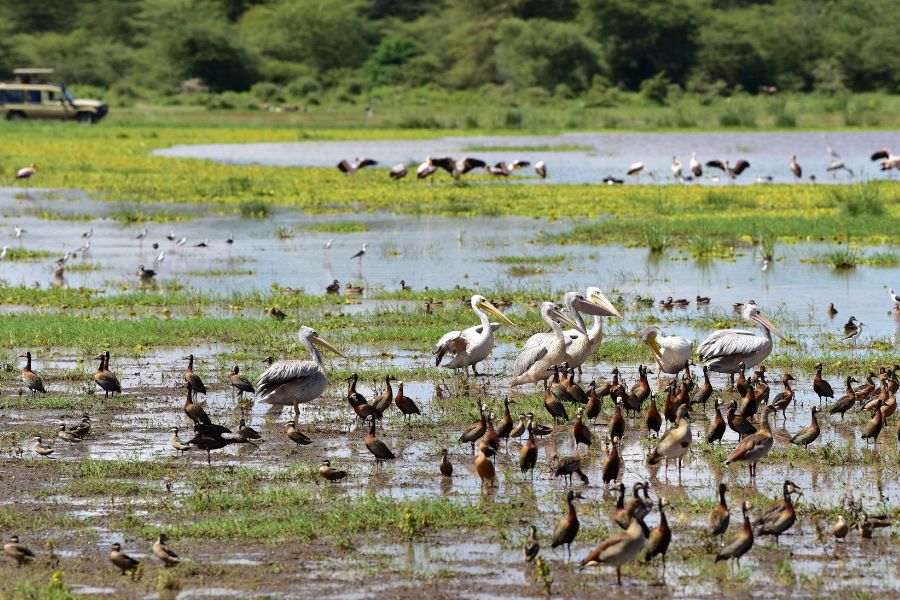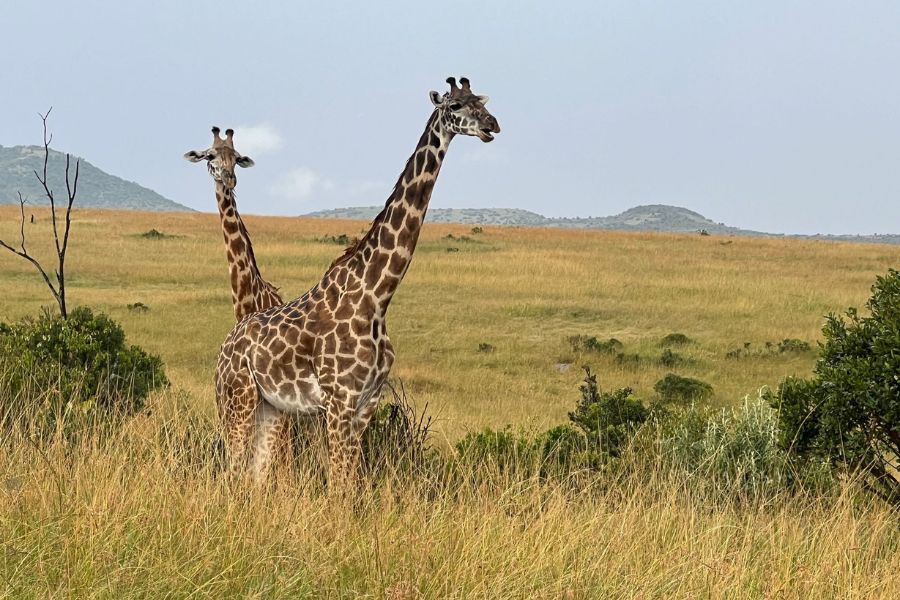OVERVIEW
The Ngorongoro Crater is a large volcanic caldera in the Ngorongoro Conservation Area in Tanzania.
It is the world's largest intact volcanic caldera, and it is home to a variety of wildlife, including lions, leopards, elephants, giraffes, zebras, buffalo, and rhinos.
The Ngorongoro Crater is about 20 kilometers in diameter and 610 meters deep. It is formed from a volcano that collapsed about 2 to 3 million years ago. The crater floor is a large grassy plain, and it is surrounded by steep crater walls.
Though it's named Ngorongoro Crater, in actual sense Ngorongoro is the vast Caldera that exploded a million years ago creating a wide ground with a lake in it.
Within it, it attracted a vast number of animals that explore the richness throughout the year.
The Flora and Fauna in it is not easily compared to any in the world. Walking tours are also arranged at the crater rim and highlands towards other smaller craters and towards Oldonyo Lengai which is an active Volcanic Mountain.
The Lerai Forest resides in the South-Western corner of the crater and holds unique yellow fever trees. If you go toward the Northern part of the forest, you’ll find the glistening Lake Magadi, Gorigor Swamp, and the Ngoitokitok Springs on the Eastern side.
You can’t go to the Ngoitokitok Springs without seeing the African hippos in their natural habitat, it’s a once-in-a-lifetime experience!
The crater is the paradise of animals like the endangered Black Rhinos, Lions, hippos, elephants, wildebeest, zebras, cheetahs, leopards, and antelopes plus different bird species. It's easily accessible both by roads and air from Arusha and other parts of Tanzania.
The Ngorongoro Crater is a popular tourist destination, and it is known for its unique landscape and abundant wildlife.
WHAT TO DO
Here are some of the things to see and do in the Ngorongoro Crater:
Go on a game drive:
Game drives are the best way to see the wildlife in the Ngorongoro Crater. Visitors can see a variety of animals, including lions, leopards, elephants, giraffes, zebras, buffalo, and rhinos.
Take a nature walk:
Nature walks are a great way to learn about the plants and animals in the Ngorongoro Crater. Visitors can see a variety of birds, insects, and other animals on nature walks.
Go on a balloon safari:
Balloon safaris are a unique way to see the Ngorongoro Crater and the wildlife that inhabits it. Visitors can see the crater from a bird's-eye view on a balloon safari.
Visit the Olduvai Gorge:
The Olduvai Gorge is an archaeological site located near the Ngorongoro Crater. It is one of the most important archaeological sites in Africa, and it has yielded a number of fossils of early humans.
OLDUVAI GORGE
The Olduvai Gorge is an archaeological site located in the Ngorongoro Conservation Area in northern Tanzania. It is one of the most important archaeological sites in Africa, and it has yielded a number of fossils of early humans.
The Olduvai Gorge is about 48 kilometers long and 295 meters deep. It is formed from a series of volcanic eruptions that occurred about 2 to 3 million years ago. The gorge exposes a number of geological layers, which contain fossils of plants, animals, and early humans.
The Olduvai Gorge is famous for the discovery of the first Homo habilis fossils in 1960. Homo habilis is an early human species that lived about 2.3 to 1.4 million years ago. Homo habilis is considered to be the ancestor of modern humans.
In addition to Homo habilis fossils, the Olduvai Gorge has also yielded fossils of other early human species, such as Homo erectus and Paranthropus boisei. The gorge has also yielded a number of stone tools, which were made by early humans.
The Olduvai Gorge is a UNESCO World Heritage Site, and it is one of the most important archaeological sites in the world. It is a place where visitors can learn about the early history of humankind.
HERE ARE SOME OF THE THINGS TO SEE AND DO AT THE OLDUVAI GORGE:
Visit the Olduvai Gorge Museum:
The Olduvai Gorge Museum is located near the gorge entrance. It houses a collection of fossils and stone tools that have been found in the gorge.
Take a guided tour of the gorge:
Guided tours of the gorge are available. Tours are led by experienced guides who can tell you about the geology, archaeology, and wildlife of the gorge.
Visit the Olduvai Gorge Research Centre:
The Olduvai Gorge Research Centre is located near the museum. It is a research facility where scientists study the fossils and stone tools that have been found in the gorge.
Masai Culture
The Maasai are a semi-nomadic people who live in southern Kenya and northern Tanzania, including in the Ngorongoro Conservation Area. They are known for their distinctive red clothing, their warrior culture, and their deep connection to the land.
A Masai village in Ngorongoro is a great place to learn about Maasai culture and traditions. Visitors can see how the Maasai live, learn about their customs, and even participate in some of their activities.
WHEN YOU VISIT A MAASAI VILLAGE IN NGORONGORO, YOU CAN EXPECT TO SEE:
Traditional Maasai homes:
Maasai homes are made from mud and cow dung, and they are thatched with grass. The homes are circular in shape, and they have a single entrance.
Maasai livestock:
The Maasai are pastoralists, and they rely on their livestock for their survival. Visitors to a Maasai village can see cows, goats, sheep, and donkeys.
Maasai warriors:
Maasai warriors are known for their bravery and their distinctive red clothing. Visitors to a Maasai village can see Maasai warriors performing traditional dances and songs.
In addition to seeing traditional Maasai life, visitors to a Maasai village can also participate in a number of activities, such as:
Learning about Maasai culture and traditions:
Visitors can learn about Maasai culture and traditions from Maasai elders. They can learn about Maasai beliefs, customs, and ways of life.
Participating in traditional Maasai activities:
Visitors can participate in traditional Maasai activities, such as dancing, singing, and beadwork. They can also learn how to make traditional Maasai crafts.
Visiting a Maasai school:
Visitors can visit a Maasai school and learn about the Maasai education system. They can also meet the Maasai children and learn about their hopes and dreams for the future.

